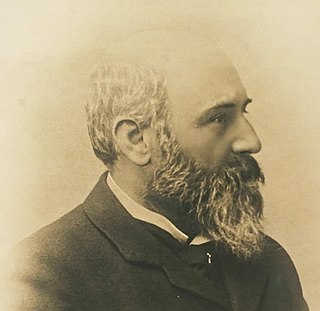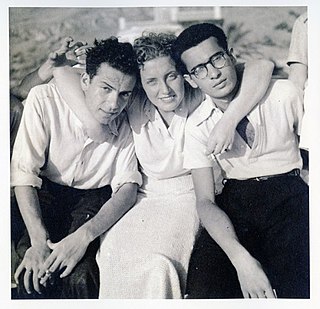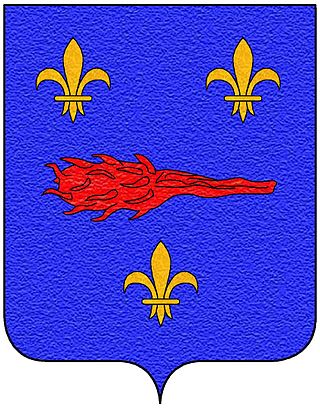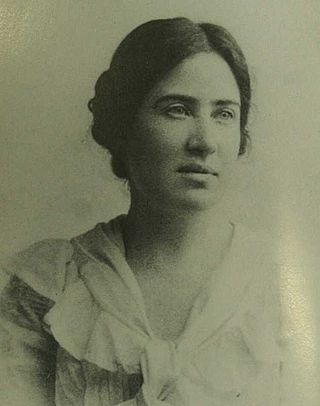Related Research Articles

The Montessori method of education is a type of educational method that involves children's natural interests and activities rather than formal teaching methods. A Montessori classroom places an emphasis on hands-on learning and developing real-world skills. It emphasizes independence and it views children as naturally eager for knowledge and capable of initiating learning in a sufficiently supportive and well-prepared learning environment. It discourages some conventional measures of achievement, such as grades and tests.

Dacia Maraini is an Italian writer. Maraini's work focuses on women's issues, and she has written numerous plays and novels. She has won awards for her work, including the Formentor Prize for L'età del malessere (1963); the Premio Fregene for Isolina (1985); the Premio Campiello and Book of the Year Award for La lunga vita di Marianna Ucrìa (1990); and the Premio Strega for Buio (1999). In 2013, Irish Braschi's biographical documentary I Was Born Travelling told the story of her life, focusing in particular on her imprisonment in a concentration camp in Japan during World War II and the journeys she made around the world with her partner Alberto Moravia and close friends Pier Paolo Pasolini and Maria Callas. In 2020 she adheres to Empathism.

Maria Tecla Artemisia Montessori was an Italian physician and educator best known for her philosophy of education and her writing on scientific pedagogy. At an early age, Montessori enrolled in classes at an all-boys technical school, with hopes of becoming an engineer. She soon had a change of heart and began medical school at the Sapienza University of Rome, becoming one of the first women to attend medical school in Italy; she graduated with honors in 1896. Her educational method is in use today in many public and private schools globally.

Rosa Vercellana, 1st Countess of Mirafiori and Fontanafredda, commonly known as ‘Rosina’ and, in Piedmontese, as La Bela Rosin, was the mistress and later wife of Victor Emmanuel II, King of Italy. Despite this, the morganatic status of her marriage meant that she was never recognized as Queen of Italy.

Alma Franca Maria Norsa, known professionally as Franca Valeri, was an Italian actress, playwright, screenwriter, author, and theatre director.

Leopoldo Franchetti was an Italian publicist, politician, and patron. He was a deputy in the Italian Chamber of Deputies and later became a Senator. He was very active in promoting education and concrete solutions for economic, social and political problems in Italy both through his own political initiatives and through his support of his wife Alice Hallgarten.
Alessandro Borgia was an Italian bishop and archbishop.
The Italy women's national artistic gymnastics team represents Italy in FIG international competitions.

Topazia Alliata was an Italian painter, curator, art dealer and writer.

People and Religions – Terni Film Festival is an international film festival, which takes place annually in November at the CityPlex Politeama Lucioli in Terni and at many other venues around the town. It deals with interfaith dialogue, spirituality in cinema, immigrant integration, visual education and activities for prisoners. For two consecutive years, the festival was awarded the Medal of the President of the Italian Republic. It has been organized by ISTESS, Institute of Theological and Historical-Social Studies, directed by Stefania Parisi. Honorary president of the festival is Krzysztof Zanussi, Polish film director; the artistic director is Arnaldo Casali. Promoted by the diocese of Terni Narni Amelia and by the Episcopal Conference of Umbria, the festival enjoys the patronage of the Municipality of Terni and the Pontifical Council for Culture, with the support of the Umbria Region, the Ministry of Cultural Heritage and Activities, as well as the Fondazione Cassa di Risparmio di Terni e Narni.

Maria Alinda Bonacci Brunamonti was an Italian poet and scholar. Her poetry dealt with contemporary issues, and she became the first woman in Italy to vote.
Bianca Bianchi was an Italian teacher, socialist politician, feminist, and writer.
Maria Rosa Cutrufelli is an Italian writer and journalist.
Romeyne Robert Ranieri di Sorbello, also known as Romeyne Robert, was an aristocrat and businesswoman, originally from the United States. She was a member of the Ranieri Bourbon di Sorbello family.

The House of the Bourbon di Sorbello marquises is a noble family originating in the early Middle Ages, the holder until 1819 of the imperial fief of Sorbello, entering among the ranks of the oligarchy of the city of Perugia in the 18th century.

Gina Elena Zefora Lombroso was an Italian physician, writer, psychiatrist, and criminologist, best remembered for her uncredited writings on the subjects of criminology and psychiatry co-authored with her father Cesare Lombroso, her individual writings on the female condition and industrialisation. She was the wife of Italian historian and writer Guglielmo Ferrero (1871-1942) and hence adopted the surname Ferrero-Lombroso. Their son Leo Ferrero (1903-1933), a writer and playwright, died in a car accident in Santa Fe (USA). All three are buried at the Cimetière des Rois in Geneva, Switzerland.
Elisa Montessori is an Italian painter.

Lina Schwarz was an Italian writer, educator, and pacifist. Born into a Jewish family living in Verona, she spent most of her life in Milan. As a result of participating in the women's rights movement in Italy, she became involved in helping disadvantaged children through civic works projects. Teaching children to read led to her becoming a well-known children's book author and a contributor to children's newspapers. She collaborated with musicians to set poems to music, recognizing the potential to increase learning through song. Many of the nursery rhymes known and recited by Italians were written by Schwarz. Although her poem "Stella, stellina, la notte si avvicina" is widely known in Italy, her authorship of it was lost after World War II ended.

Enrichetta Chiaraviglio-Giolitti was an Italian philanthropist, educational patron and activist. Born in Florence, she was the oldest daughter of five-time Prime Minister of Italy, Giovanni Giolitti. An astute and intellectual woman, she was his confidant and correspondent although they did not always agree on policy. Interested in improving children's education in Italy, she worked with several associations and on commissions to study and create curricula. She was a supporter of Maria Montessori and persuaded Margherita of Savoy to become a patron of her schools.
References
- ↑ Buseghin, Maria Luciana. Alice Hallgarten Franchetti. Un modello di donna e di imprenditrice nell’Italia tra ‘800 e ‘900, Selci Lama, Editrice Pliniana, 2013, pp. 2.
- ↑ Buseghin, Maria Luciana. “Alice Hallgarten Franchetti: A Woman Beyond Barriers.” A Female Activist Elite in Italy (1890–1920), Springer International Publishing, 2021, pp. 59–92, https://doi.org/10.1007/978-3-030-87159-8_3.
- ↑ Modena, Luisa Levi D'Ancona. “Jewish Women in Non-Jewish Philanthropy in Italy (1870–1938).” Nashim: A Journal of Jewish Women's Studies & Gender Issues, no. 20, 2010, pp. 9–33. JSTOR, www.jstor.org/stable/10.2979/nas.2010.-.20.9. Accessed 25 Sept. 2020
- ↑ pp.63
- ↑ Buseghin, Maria Luciana. Alice Hallgarten Franchetti. Un modello di donna e di imprenditrice nell’Italia tra ‘800 e ‘900, Selci Lama, Editrice Pliniana, 2013, pp. 3.
- ↑ Sofia Bisi Albini, Il trionfo di una donna Maria Montessori, «Vita femminile italiana», a.IV, fasc.V, maggio 1910, pp. 482-485
- ↑ Toniolo, Gianni, ed. (2013). The Oxford handbook of the Italian economy since unification. New York, NY: Oxford University Press. ISBN 9780199936694.
- ↑ McDonald, J.S. (October 1958). "Some Socio-Economic Emigration Differentials in Rural Italy, 1902-1913". Economic Development and Cultural Change. 7 (1): 55–72. doi:10.1086/449779. ISSN 0013-0079. S2CID 153889304.
- ↑ Buseghin pp.64
- ↑ Buseghin pp.66
- ↑ Buseghin pp.69
- ↑ Buseghin pp.69
- ↑ Buseghin pp.69
- ↑ Buseghin pp.70-72
- ↑ G. Alatri (2018), Maria Montessori e Maria Maraini Guerrieri Gonzaga, in «Annali di storia dell’educazione e delle istituzioni scolastiche», XXV, 2018, p. 121. ISBN 9788828400264
- ↑ Buseghin pp.79-80
- ↑ Buseghin pp.85